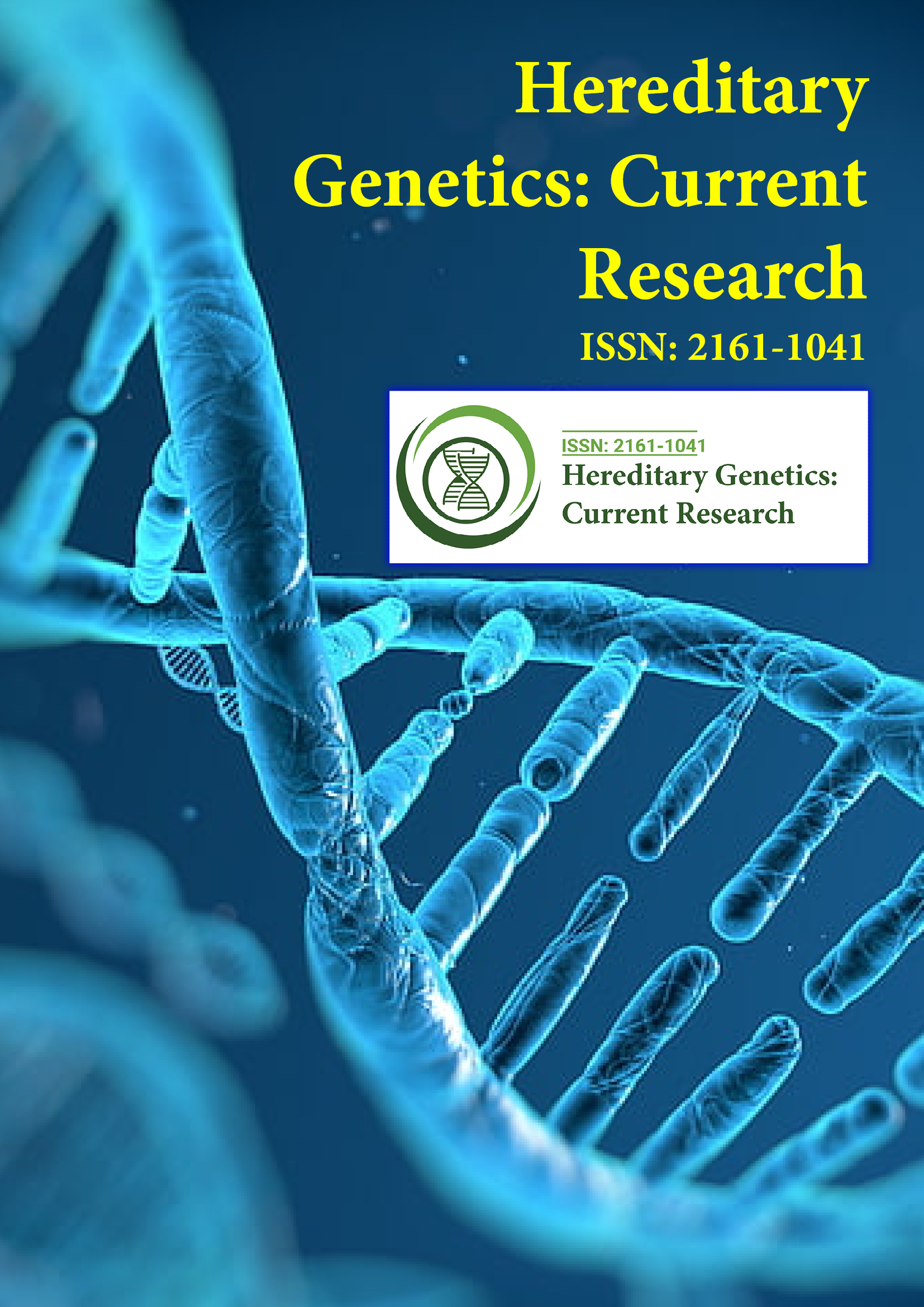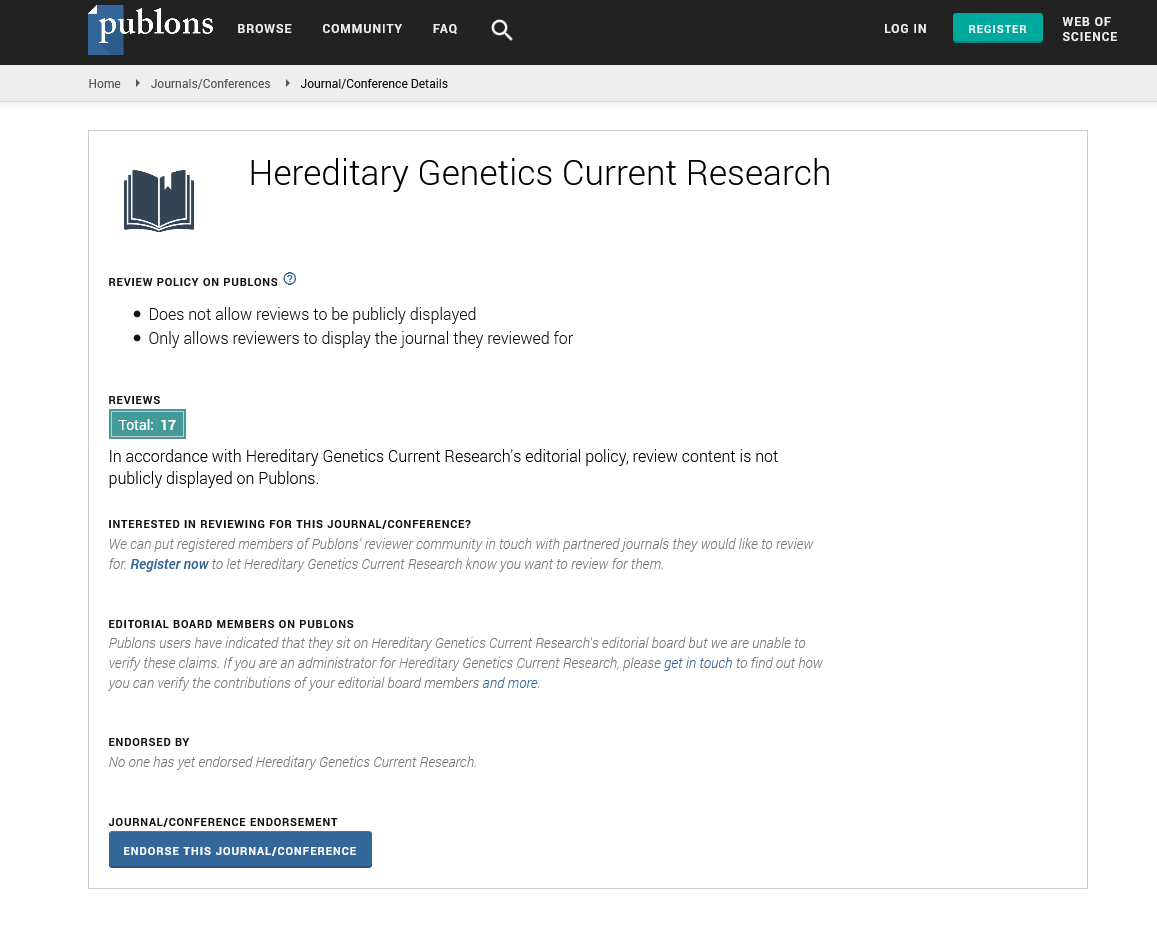Indexed In
- Open J Gate
- Genamics JournalSeek
- CiteFactor
- RefSeek
- Hamdard University
- EBSCO A-Z
- NSD - Norwegian Centre for Research Data
- OCLC- WorldCat
- Publons
- Geneva Foundation for Medical Education and Research
- Euro Pub
- Google Scholar
Useful Links
Share This Page
Journal Flyer

Open Access Journals
- Agri and Aquaculture
- Biochemistry
- Bioinformatics & Systems Biology
- Business & Management
- Chemistry
- Clinical Sciences
- Engineering
- Food & Nutrition
- General Science
- Genetics & Molecular Biology
- Immunology & Microbiology
- Medical Sciences
- Neuroscience & Psychology
- Nursing & Health Care
- Pharmaceutical Sciences
Editorial - (2021) Volume 10, Issue 6
A Brief Note on Huntington's Disease
Elnaz Zareei*Received: 02-Nov-2021 Published: 23-Nov-2021, DOI: 10.35248/2161-1041.21.10.e208
Description
down from generation to generation in the family. It is caused by incorrect instructions in the DNA that builds our bodies and keeps them moving. DNA is made up of thousands of genes, and people with HD have a small defect in a gene called huntingtin. Over time, this mistake can damage the brain and cause HD symptoms. The HD causes a decrease in a person's physical, mental and emotional abilities, usually during prime and is currently irreparable. Most people begin to develop symptoms in adulthood between the ages of 30 and 50, but Huntington's disease can also occur in children and young adults (known as juvenile Huntington's disease, or JHD). Huntington's disease is known as a familial disease because all children of one parent of Huntington's disease have a 50/50 chance of inheriting the defective gene. Today, about 41,000 symptomatic Americans and more than 200,000 people are at risk of inheriting the disease.Symptoms of Huntington's disease vary widely from person to person, but usually include:
•Depression, personality changes and mood swings
• Unsteady gait and impaired judgment
• Unsteady gait and involuntary movements (chorea)
• Indistinct speech, difficult swallowing and significant weight loss
In huntington's disease, most people have problems with their thoughts, actions, and movements. Symptoms usually worsen in 10 to 25 years and affect reasoning, walking, and speaking abilities. In the first place, people with Huntington's disease and heir friends and family can have difficulty planning, remembering, and maintaining work. They may develop mood swings such as depression, anxiety, nervousness, and anger. Most people with Huntington's disease become "capricious" and develop uncontrolled facial and limb movements called chorea.
Due to uncontrolled movement (chorea), people with Huntington's disease can inadvertently lose weight and have difficulty walking, balancing and moving around safely. Eventually, you will not be able to work from home, drive a car, or do household chores and may be eligible for disability benefits. Over time, people have difficulty speaking and swallowing, slowing down, and becoming stiff. People with advanced Huntington's disease need full-time care to help their daily lives and eventually succumb to pneumonia, heart failure, or other complications. The symptoms of Huntington's disease are sometimes called ALS, Parkinson's disease, and Alzheimer's disease-all at the same time.
Huntington's disease is found in a gene called huntingtin. This gene was discovered in 1993. Everyone has the huntingtin gene, but only those who inherit a bug called an HD mutation are at risk of developing HD and passing it on to their children. The gene is composed of the nucleotides "letter" A, G, C, T and forms a code that can be read in three groups. Huntington's disease is caused by the repeated letters CAG of the huntingtin gene. CAGCAG CAAG CAGCAG. This is known as CAG repeat elongation. In the huntingtin gene, most people have about 20 CAG repeats, but people with Huntington's disease have about 40 or more. Anyone who has this CAG repeat elongation in the HD gene will eventually develop the disease, and each of their children has a 50% chance of developing HD.
Our genes are like instructions for making proteins, the machines that move everything in our body. The huntingtin gene (DNA) contains instructions that are copied into the biological message (RNA) that makes the huntingtin protein. Huntingtin proteins are very large and appear to have many functions, especially because the brain develops before birth, but they are not yet fully understood. Repeated extra CAG in people with Huntington's disease has been shown to make the huntingtin protein very long, difficult to maintain, and difficult to work with. Over the years, this "mutated" huntingtin protein forms aggregates in brain cells, damaging them and causing death. The most vulnerable parts of the Huntington's disease are called the striatum, which control movement, mood, and memory. Striatal damage over time is the cause of the symptoms of Huntington's disease.
Citation: Zareei E (2021) A Brief Note on Huntington's disease. Hereditary Genet. 10:e208.
Copyright: © 2021 Zareei E. This is an open access article distributed under the terms of the Creative Commons Attribution License, which permits unrestricted use, distribution, and reproduction in any medium, provided the original author and source are credited.

